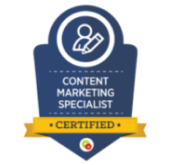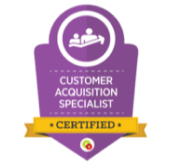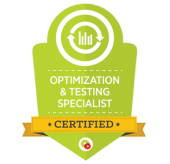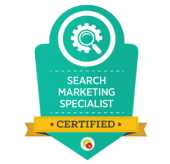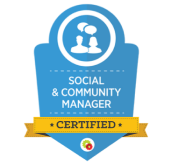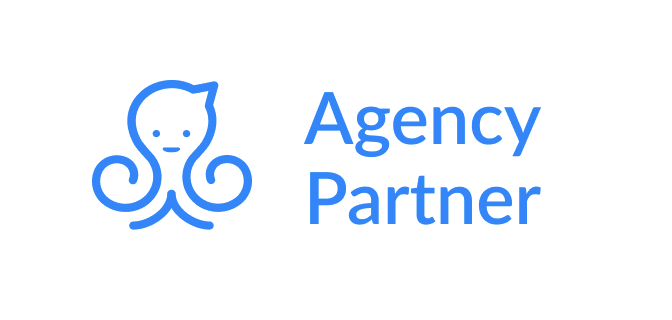Over the last 15 years in education marketing we’ve seen a lot of marketing mishaps.
So to prevent you from falling into the same traps, we’ve put together a list of ‘Top 11 Marketing Don’ts’ – with actionable tips backed by expert advice.
Top 11 Don’ts…
- Not running ads → In the Edu sector, very few businesses run ads but think they do SEO. For our clients, Facebook ads have been the highest ROI channel for years! So, if your ads haven’t performed well in the past – do something about it. Don’t ignore the power of the ads! Wordstream asks: is your audience too small? Does your ad reflect Facebook’s guidelines? How low is your ad engagement? Have you set a really low daily budget? Choose your answers wisely…
- Sending emails on Mondays → Unless it is a regular email you send which your list looks forward to, don’t do it. Think about what happens when you’ve got a case-of-the-Mondays: a long day back after the weekend with emails, emails, meetings… and more emails. So, to increase those open, click-thru, traffic, subscriber and conversion rates, CoSchedule recommends Tuesdays and Thursdays are the top two days to send out email comms. SEO Pressor back this up with a top midweek time-frame starting at 6 am, peaking at 10 am through to 11. Oh, and set alerts for public holidays because your clients in the US won’t be in the office over Labour Day weekend even if you are.
- Not being a smartyphone pants → So, your landing page has been designed and looks snazzy – but, wait, what about mobile? Yes, you forgot to optimise the page for smartphones. If you’re only thinking about optimising landing pages and emails for desktops – you could be missing out on nearly half your target audience. Recent data shared by Sugar Market reveals that “one-third of marketers say their emails are read on mobile devices at least 50% of the time, and if your emails aren’t designed with these smaller screens in mind, their effectiveness will diminish rapidly” and “responsive design can increase email clicks by 130%.” Make sure the platform you use can be optimised for all screen sizes. Hint: If you’re using Unbounce to create landing pages with embedded forms for customers to sign-up for services or receive your product – you can switch to a mobile view and edit until it’s smartphone snazzy too!
- Lack of email automation strategy → There are advantages to automating your comms without coming across as robotic. Campaign Monitor highlights the impact of automated emails for marketers: “Three-quarters of marketers say the biggest benefit of automation is saving time, while 68% say its increased customer engagement and 58% say it’s more timely communication.” Nurture your audience and increase brand loyalty with welcome messages, reminders, tips and ‘how tos’ for using your products and services, etc. Include this in your strategy to generate more leads, reach out to new, current and inactive customers – as well as for boosting conversions.
- Making content a low priority → Content shouldn’t be an afterthought – especially during the Engage and Excite steps on the Customer Value Journey. It is also key for developing brand awareness and nurturing campaigns. E.g. with blog posts, digital newsletters and email series. Aligning content in your marketing strategy is crucial for retention, as well as engagement. Buildfire recognises the value of content creation for retention purposes too, with content calendars and automated emails to re-engage your prospects and convert them into customers.
- Being an authority on the subject without doing the research →Forbes says it how it is (and how it shouldn’t be!): “Any Ed tech marketer who thinks of themselves as more of an industry expert than their customers probably misunderstood how “thought leadership” should be leveraged in education”. Don’t alienate and insult your audience by claiming to know what they know or being an expert. This will also affect the credibility of your company. Do the research instead and leverage what industry aficionados are saying. Use their studies and quotes to add value to your own content. Just like you do in an academic essay. Make a point, support it with a citation and expand on said points to deliver a rich piece of content your target audience will want to read.
- Showing an obvious lack of empathy → It’s not just about the phrasing – it’s putting yourself in your customers’ shoes. Yes, you’ve said “we understand” but do you really? Being heavy-handed is a careless approach and it’s obvious the empathy is a thinly-veiled sales pitch. Don’t assume, patronise or dictate what your audience does or how they’re feeling. Teachers work hard. They experience long hours each day, they get little pay and they provide emotional support for their students – as well as teaching. Recognising their hard work and how your product or services can benefit them is what they need to hear.
- Not understanding the power of influencers →EdWeek Market Brief revealed that: “Educators are strongly influenced by their peers when they want information about education technology”. Up to 92% of peers consider word-of-mouth as an influencing method of product promotion. Why not get teachers, parents and students to act as brand advocates by trialling or testing your services – to influence others, like head of districts and key decision-makers? Think about reaching out to influencers via social media too. They can increase brand awareness and loyalty through online word-of-mouth by liking, sharing and commenting on your tweets or agreeing to testimonials that you can publish on your website (and used as part of your content marketing strategy too!). If you have case studies and testimonials, get these along with the school logos (and any award logos!) across your website in a prominent position. When we look into buying or trying a product, we want to feel like we are walking on safe ground that others have previously tread upon. We want to feel like taking out a trial or requesting a demo is a safe and logical thing to do, seeing that our peers did the same and had a good experience helps with this. We call this ‘Social Proof’ and it’s a great thing!
- Using complicated forms and CTAs → These can impact your conversion rates – so pay attention. Nobody likes to fill in a form. Do you *really* need to know their job title at this point? Do you *really* care the name of the school right now?. If it’s a barrier that’s unavoidable, you can make forms as simple as possible. SalesCycle recommends you keep forms as short as possible, don’t ask unnecessary questions and show a progress bar – as people get impatient not knowing how long it will take (can you blame them?). Include mandatory fields and then follow-up with a personal call. This allows you to provide a tailored, personable service – adding a human touch too. Remember – if someone is using their phone, the form needs to be concise and easy to use (bearing in mind data plans from mobile service providers). Don’t forget: optimise for smartphones – because messy formats or long-loading screens will result in abandonments!
- Never segmenting your audiences → If you haven’t done so already: segment your lists. Not every message you send via email needs to go to your entire database. Ask yourself, what is the purpose of the email? Is it to engage, convert or retain their interest? Segmenting your comms is ideal for marketers to get the right message to the right person. Neil Patel outlines great examples of how you can segment your lists, including by type of engagements, area/ geography, purchases, website behaviour, demographics, results of surveys and quizzes – and more.
- Failing to track metrics and carry out A/B testing → How can you tell how well your campaign is going and what needs to be improved if you’re not checking the data? Look at your email campaign stats and try some A/B testing. This can be experimenting with different subject lines, email content, images, CTAs, templates or layouts. Record your opens, replies, bounces, unsubscribes and click-thru rates. This will help you to refine your messaging to get the responses you’re hoping for.
We hope that helps you to change the old don’ts into brand-new do’s.



